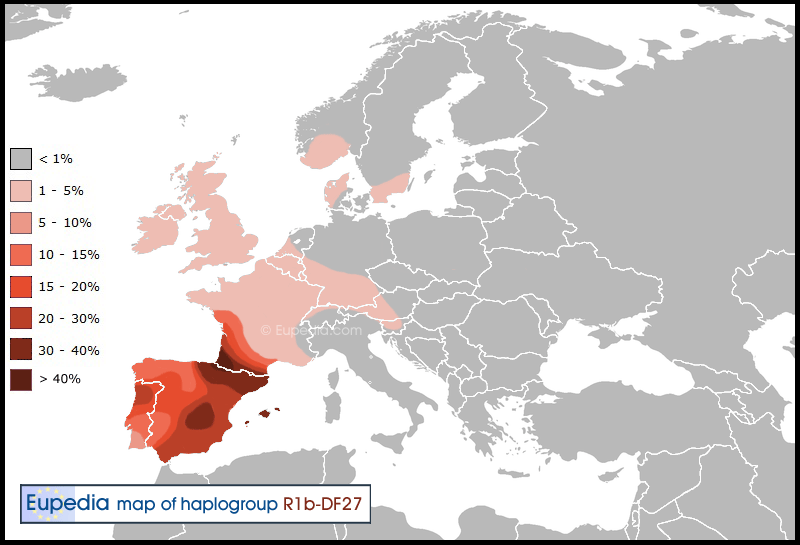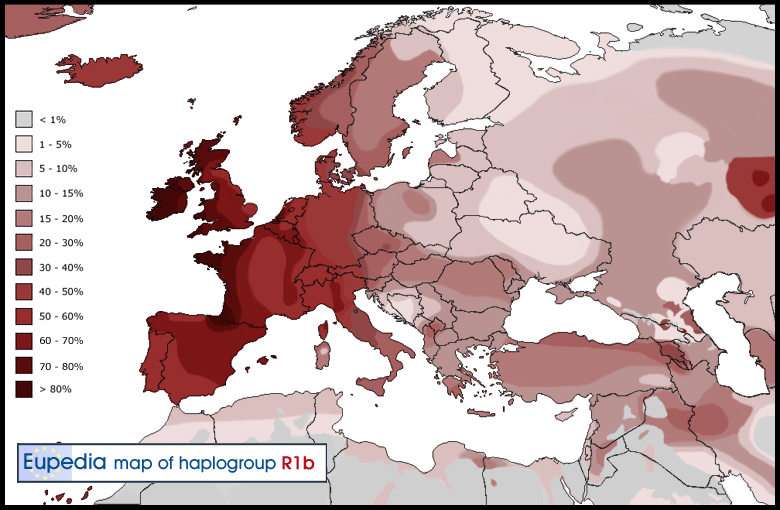Y-DNA Haplogroup R1b-DF27:
The Bronze Age started in Mesopotamian and helped spread ~7,000 years ago in R1b1a areas between the Black Sea and Caspian Sea, which fueled a rapid expansion into Europe, replacing the existing Iron Age farming cultures… (The Black Sea flooded-in ~10,000 years ago when the Mediterranean Sea rose rapidly [see UNESCO study, 2009])
R1b consisted of the Yamnaya culture (3,500-2,500 BCE), and spread west into Europe creating the Corded Ware culture, which is ~75% Yamnaya autosomal DNA (aDNA), of the tested skeletons from modern day Germany. (Also, Yamnaya’s DNA contribution is ~50% of modern Central & Northern Europeans!) The English language derived from the Yamnaya, who had a Proto-Indo-European language.
… 4,000 years ago, DF27 shows up, a descendant subclade down the Y-DNA branch from R1b, in the Iberian Peninsula, known as Iberia, where modern day Spain & Portugal, as well as Southern France, reside.
2,500 years ago, Greek historian Herodotus said of the Phocaeans, “it was they who made the Greeks acquainted with … Iberia”. Ancient Greek word for Iberia: Ιβηρία.
2,000 years ago, Greek historian Strabo, working for the Romans, refers to the Carretanians as people “of the Iberian stock” living in the Pyrenees, who are to be distinguished from either Celts or Celtiberians.”
Note: the Celts were a Culture, not a specific Y-DNA branch or bloodline, more of a group of a few different Y-DNA branches. Same with the Corded Ware cultures.


